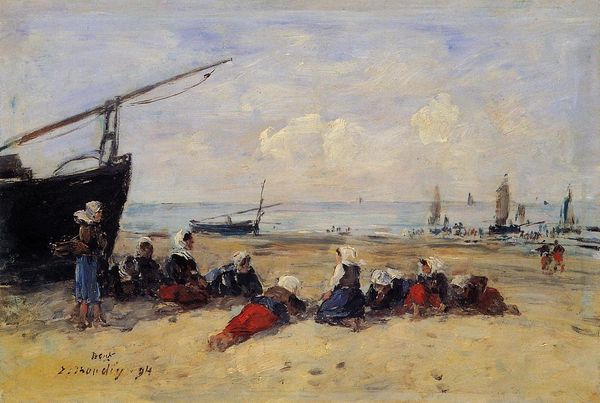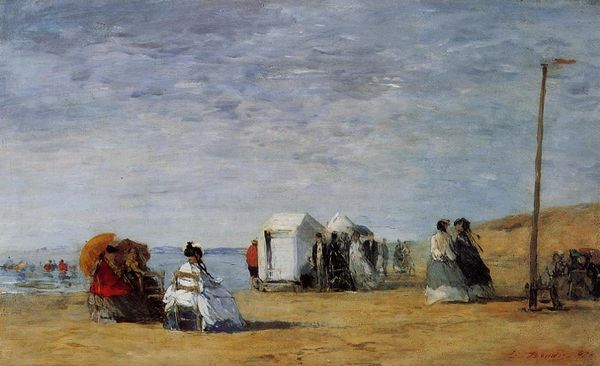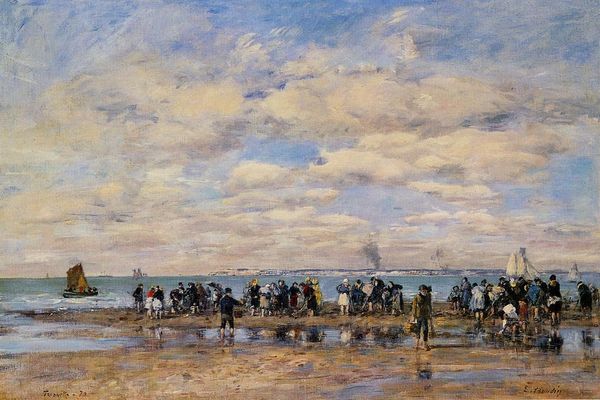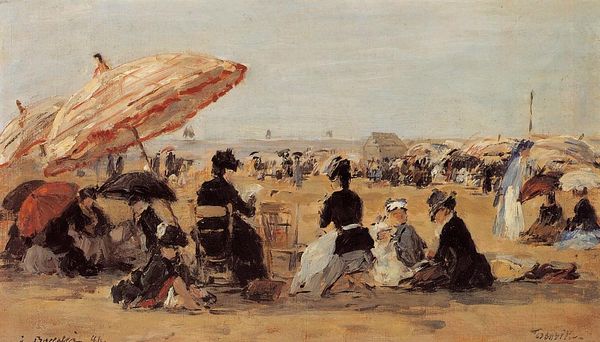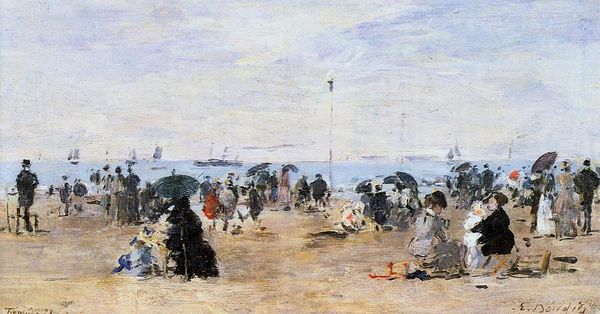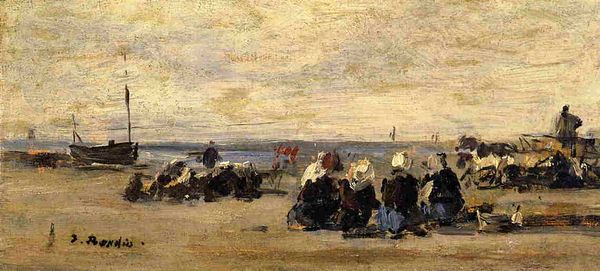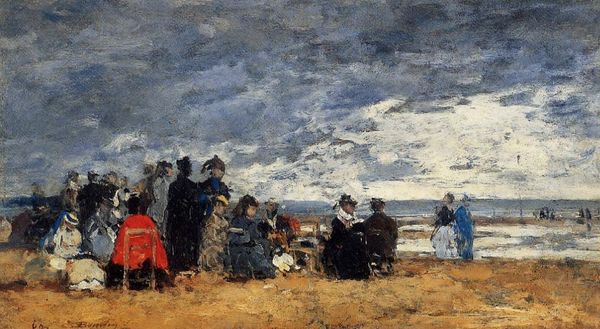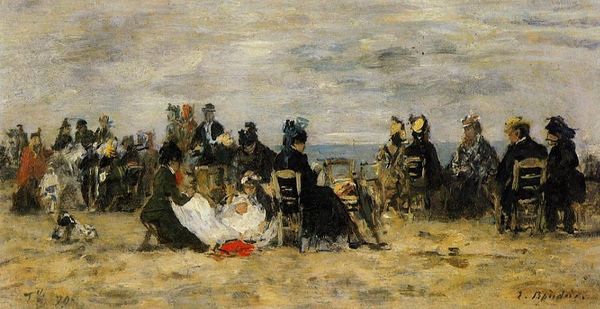
Copyright: Public domain
Eugène Boudin's "The Beach at Trouville" presents a vibrant slice of 19th-century leisure, rendered with oil on canvas. The composition is strikingly divided into three horizontal bands: the sandy shore, the shimmering sea, and the expansive sky. Boudin's brushwork is loose, capturing the fleeting qualities of light and atmosphere with a palpable sense of immediacy. Here, the figures are secondary to the overall effect of the scene; they are mere indicators of scale and activity. Boudin uses color to define spatial relationships. Notice how the muted tones of the beach contrast with the brighter hues of the sky, enhancing the sense of depth. The beach, dotted with parasols and figures, creates a bustling yet harmonious scene. Boudin's formal approach underscores his position as a forerunner to Impressionism. It challenges academic conventions, emphasizing sensory experience and the ephemeral nature of perception. The painting stands as a testament to Boudin's innovative exploration of light, color, and atmosphere, marking a pivotal moment in the evolution of modern painting.
Comments
No comments
Be the first to comment and join the conversation on the ultimate creative platform.
